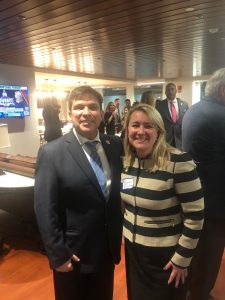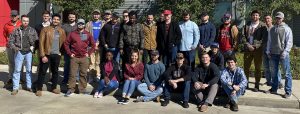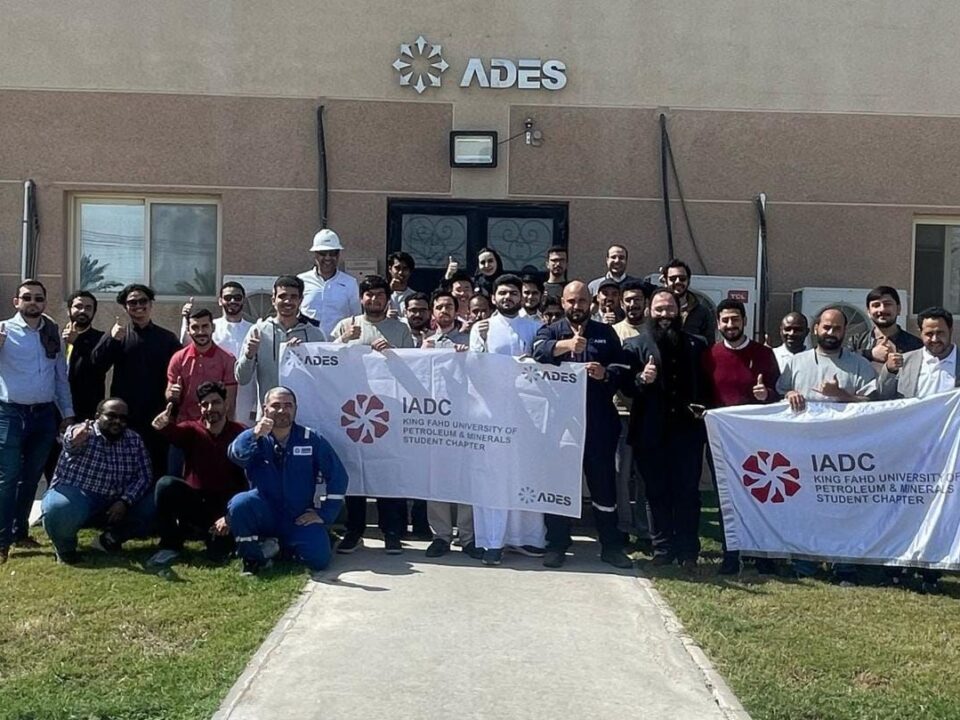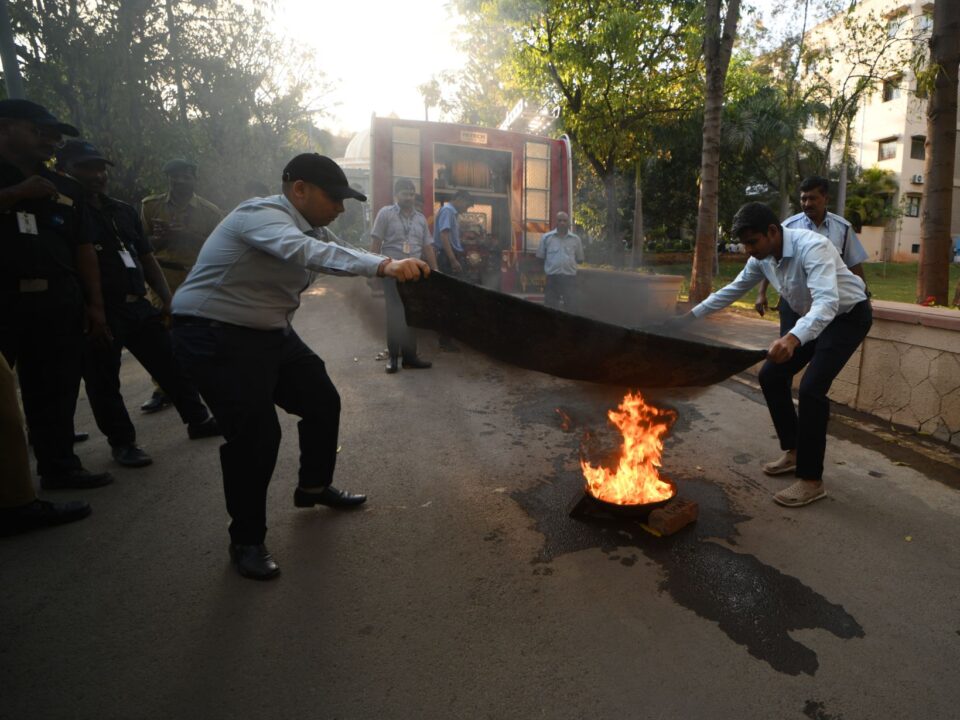
DRILLBITS
Monthly eNewsletter from the IADC
DrillBits – March 2020

DRILLBITS – March 2020
In This Edition
Recurring Items
Sign Up For the DRILLBITS Email Newsletter!
Advocacy
IADC Supports Passage of USMCA
On 16 January, the U.S. Senate voted to advance the United States, Mexico, Canada Trade Agreement (USMCA), and it was signed by the President on 29 January. In response, IADC President Jason McFarland said:
“The Senate’s vote to advance the USMCA trade deal is good news for the economies of the United States, Mexico and Canada. Included in the deal is the continuation of zero tariffs on critical energy sources that fuel cars and heat homes as well as provisions that allow for the swift movement of equipment and personnel across the borders of North America, two issues that are particularly relevant to IADC’s membership. Trade between the countries supports millions of jobs and is a strong driver of economic growth, and we are thankful to President Trump for putting his signature on this historic trade agreement that will ultimately generate continued growth for a wide variety of industries.”
Netherlands Nitrogen Emissions Policy Causes Delays in Oil and Gas Sector
Nitrogen emissions (NOx and ammonia) in the Netherlands are among the highest in the EU, not least because of the country’s dense population with both very high industrial and very high agricultural production. As is the case in other countries, a ceiling is in place in the Netherlands for the allowable level of emissions.
For years, this level had been exceeded in several areas. However, in 2015 a policy was introduced, which in effect legalized this practice by making it possible to grant permits for projects that would be emitting nitrogen now, but which carried expectations for future savings. In this way, the overall emission quantity would be reduced. An example could be the construction of an emission-free building, which would have high emissions in the construction phase and no emissions later.
However, in 2019 the Dutch Council of State ruled that this policy represents a violation of the European Habitat Directive on the grounds that the predicted future savings are highly uncertain. As a result, the Dutch government is searching for solutions to drastically reduce nitrogen emissions. This has caused the introduction of lower speed limits on motorways, it has led to initiatives in the agricultural sector, it has caused delays of permits in the construction sector, and it has caused similar delays in the oil and gas sector. At present, operators estimate that more than 30 projects in our sector have been halted or are at risk of being halted.
The Dutch oil and gas trade organisation, NOGEPA, has made a significant effort to argue the industry’s case. In this regard, they have reached out to the industry, including a number of IADC member companies, in an attempt to map out initiatives already in place. The drilling contractors in turn involved IADC to help consolidate information from our industry regarding existing initiatives and new ideas which would help curb nitrogen emissions. This consolidated overview is now being used by NOGEPA in their advocacy efforts.
IADC Attends Congressional Oil and Gas Caucus Event 
On 11 February, IADC’s Vice President Government and Industry Affairs, Liz Craddock attended a Congressional Oil and Gas Caucus event in Washington, D.C. The Caucus is comprised of a group of House Democrats dedicated to educating Members of Congress about oil and gas productions and the issues involved. During the event, Ms. Craddock had the opportunity to speak to members of the Caucus including Representatives Mark Veasey (D-TX); Kendra Horn (D-OK); Henry Cuellar (D-TX); Lizzie Fletcher (D-TX); Lou Correa (D-CA) and Jim Costa (D-CA), about drilling contractors and their role in the industry and thank them individually for their support. Pictured is Ms. Craddock alongside Rep. Vicente Gonzalez (D-TX) who leads the Congressional Oil and Gas Caucus.
Washington D.C. Updates
House:
House Democrats released a wide range of legislation in February, largely aimed at solidifying their stances on progressive energy and environmental policies ahead of election time in November. Energy and Commerce committee Chairman Pallone released a large package aimed at EVs and charging infrastructure, and Democrats on the Natural Resources Committee continued to release anti-drilling legislation relating to ANWR and other federal lands. On the Republican side, Minority Leader McCarthy released a bill aimed at expanding the existing 45Q tax credit for carbon capture and sequestration, with plans to release other proposals on clean energy and conservation down the road. Rep. Garrett Graves, ranking member of the Select Committee on the Climate Crisis, is strongly supporting the bill along with Whip Scalise.
Senate:
In late February, Energy Committee Chairman Lisa Murkowski and Ranking Member Joe Manchin released long awaited energy legislation, a package that consists of nearly 60 (mostly) bipartisan bills. The majority of this legislation focuses on research and funding for new technologies, including plans to leverage the oil and gas industry’s expertise in the creation of geothermal wells. The measure is Murkowski’s capstone legislative project and will get floor time very soon to be passed. Finally, Senators took aim at the federal royalty rate for oil and gas in February, with a bipartisan bill being introduced by Sen. Grassley aimed at boosting the federal onshore royalty rate from 12.5% to 18.75%
White House:
With the 2020 Democratic primary raging in the background, the President and his executive agencies were busy in February, releasing a plethora of regulatory updates along with a 2021 budget proposal. Under the President’s budget request, EPA would see a 27% cut, Interior would see a 13% cut, and the Department of Energy would see a 29% cut. EPA also released a new National Water Reuse Action Plan that calls for studies into improved reuse of oil and gas produced water. Additionally, EPA and the Interior Department, among other federal agencies, published a huge regulatory guidance database last week, fulfilling a presidential executive order in October requiring them to post thousands of documents online. Regarding other agencies, the Department of Treasury issued several carbon capture guidelines and the Department of Energy announced it is looking to extend export authorizations for several LNG facilities, something Senate Democrats have since vowed to push back on strongly. Additionally, year-end figures for U.S. production on federal lands and waters in 2019 were released last month, clocking in at over 1 billion barrels.
INDUSTRY NEWS
IADC Celebrates 80 Years
In 2020, IADC will be celebrating it’s 80th anniversary. In recognition of the anniversary, IADC President Jason McFarland said:
“IADC was started in 1940 by a group of visionaries, who believed that drilling contractors needed a collective voice to advocate for their interests within our industry. From that small but auspicious start, IADC has grown, weathering massive industry changes and the various upturns and downturns, into the modern and influential association we are today. I’m proud to be leading IADC into the future, particularly as we face head on some of our industry’s most pressing issues, serving as the space where we can work together on solutions. For as far as we have come since 1940, our core values as an association have remained the same, and advancing the interests of drilling contractors remains our focus. This year, we will be honoring and celebrating our past, while looking forward to our future, and I invite you to join us. Stay up to date with us on social media, attend an IADC conference, get involved with your local chapter, contribute on an IADC committee. Our strong 80-year history has only been possible because of our membership’s commitment to supporting the Association, and your expertise and participation is valued.”
IADC Chairman’s Anniversary Award Program Now Accepting Submissions
IADC believes in the importance of continually improving performance for the drilling industry. The Chairman’s Anniversary Award was developed to recognize field-based individuals who have made a direct impact on improved performance for their company, either through a project or personal effort. The Award is given every five years as part of IADC’s anniversary celebrations.
Award winners will demonstrate how their innovative project directly improved performance in the field in one of the following ways:
- Eliminating injuries
- Enhancing process safety
- Reducing NPT
- Improving equipment reliability
- Increasing efficiency
Submissions are being accepted now through 31 May and will be judged based on the above criteria by a selected group of IADC staff and industry veterans. The winner will be contacted later this summer and the award will be presented by IADC Chair Julie Robertson during the IADC Annual General Meeting in November in San Antonio.
For more information and to submit a nomination, please visit the IADC Website.
US Bureau of Energy Management Announces GoM Lease Sale 254
In the 12 February Federal Register, the U.S. Bureau of Ocean Energy Management (BOEM) published an announcement of Gulf of Mexico OCS Region-Wide Oil and Gas Lease Sale 254. The lease sale will be convened at 9 a.m. CST on 18 March, 2020. BOEM will offer for bid all of the available unleased acreage in the GoM, except those blocks specifically listed in the subject of the Federal Register notice.
The full notice can be found at https://www.govinfo.gov/content/pkg/FR-2020-02-12/pdf/2020-02716.pdf
University of Stavanger Publishes Introduction to Permanent Plug and Abandonment of Wells
The University of Stavanger, along with other organizations, recently published Introduction to Permanent Plug and Abandonment of Wells. Since 2012, the University has been at the academic frontier both nationally and internationally to develop this topic and educate engineers on permanent plug and abandonment of hydrocarbon wells. Along the way, different organizations have contributed to developing and disseminating the information. After five years of work, the publication was completed and is now available for free download, made possibly courtesy of the University of Stavanger, the Norwegian Oil & Gas P&A Forum and Springer Publications.
The digital download can be found at Springer Publications.
Oil Production from Interior-Managed Leases Surpassed 1 Billion Barrels for First Time in History
On 11 February, the U.S. Department of Interior announced that for the first time in history, over one billion barrels of oil were produced in Fiscal Year 2019 from leases on Federal and American Indian-owned lands and offshore areas. The number represents a 122.5 million barrel increase in production when compared to Fiscal Year 2018.
Royalty revenues collected in Fiscal Year 2019 from oil production on Interior-managed lands increased by 21 percent over 2018 to $7.5 billion. Often the second-highest generator of federal income following taxes, energy revenue disbursements are a critical source of funding to states, American Indian Tribes and individual Indian mineral owners, as well as to the Land and Water Conservation Fund, Reclamation Fund, Historic Preservation Fund and the U.S. Treasury. Accounting for all energy production on federal and American Indian-owned lands and offshore areas, total revenues collected last year increased by 31 percent to approximately $12 billion.
More information can be found at the Department of Interior’s website.
OSHA Establishes Revised National Emphasis Program for Respirable Crystalline Silica
The U.S. Occupational Safety and Health Administration (OSHA) recently established a revised National Emphasis Program (NEP) to identify and reduce or eliminate worker exposures to respirable crystalline silica (RCS) in general industry, maritime and construction. The NEP targets specific industries expected to have the highest numbers of workers exposed to silica and focuses on enforcement of the new silica standards, one for general industry and one for maritime and construction.
Changes to the program include:
- Revised application to the lower permissible exposure limit for respirable crystalline silica to 50 micrograms per cubic meter (µg/m3) as an 8-hour time-weighted average in general industry, maritime and construction.
- Updated list of target industries (which includes oil and gas), as listed in the appendix of the NEP; from this list, area offices will develop randomized establishment lists of employers in their local jurisdictions for targeted inspections;
- Compliance safety and health officers will refer to current enforcement guidance for RCS inspection procedures;
- All OSHA regional and area offices must comply with this NEP, but they are not required to develop and implement corresponding regional or local emphasis programs; and
- State Plans must participate because of the nationwide exposures to silica.
For more information, please visit the OSHA website.
https://www.osha.gov/sites/default/files/enforcement/directives/CPL_03-00-023.pdf
C-NLOPB Releases Annual Report
The Canada-Newfoundland & Labrador Offshore Petroleum Board (C-NLOPB) recently released its annual report providing a summary of activities and performance and commentary on the state of operations in the Newfoundland-Labrador offshore area. The entirety of the report can be found at C-NLOPB’s website.
API Releases Economic Analysis on U.S. Fracking Ban Effects
In late February, the American Petroleum Institute (API) released a new economic analysis outlining the economic consequences of a ban on federal leasing and hydraulic fracturing (or fracking) for the U.S.
The study – conducted by economic modeling firm OnLocation, Inc. – warns that banning federal leasing and fracking on public and private lands would cost up to 7.5 million American jobs in 2022 alone, lead to a cumulative GDP loss of $7.1 trillion by 2030, slash household incomes by $5,400 annually, increase household energy costs by more than $600 per year and reduce farm incomes by 43 percent due to higher energy costs. If a ban is enacted, the U.S. would flip from being a net exporter of oil and petroleum products to importing more than 40 percent of supplies by 2030.
More than 95 percent of U.S. natural gas and oil wells today are developed using hydraulic fracturing. The study projected that states with the highest job losses if a fracking ban is enacted include Texas (1,103,000), California (765,000), Florida (711,000), Pennsylvania (551,000) and Ohio (500,000), for a total of 3.6 million job losses in those five states alone in 2022.
The full economic analysis can be found on API’s website.
IADC Accreditation
IADC to Receive Excellence in Practice Award from Association for Talent Development
IADC’s Accreditation and Credentialing Division was notified in December that they will receive an Excellence in Practice Award from the Association for Talent Development (ATD) for their award submission titled “Well Control Training and Gap Identification in the O&G Industry.”
The award will be presented at the ATD May 2020 International Conference & Exposition in Denver, CO.
The Excellence in Practice Award “recognizes exemplary practices in workplace learning and talent development.”
IADC’s submission comprises the WellSharp program, its 11 distinct courses, the WellSharp exam database and system, program metrics and database analytics, and ongoing efforts to address identified knowledge gaps.
ATD’s award notification explains that this award is for training programs that have been developed and delivered using “proven practices that meet a demonstrated need, have appropriate design values, are aligned with other talent strategies, and deliver sustained, clear, and measurable results for their organizations.”
Updated Facilitator Certification for WellSharp® and WellSharp® Plus Instructors
IADC’s Facilitator Certification course has been updated to include the “human factors” (i.e., crew resource management) content for instructors seeking approval to teach the new WellSharp® Plus course, which integrates the human factors content into the technical well control scenarios.
The full 5-day course comprises 3 days of training on how to facilitate adult learning and 2 days of training on strategies for delivering and assessing content specific to the WellSharp Plus course. Attendees can take all or part of the course to satisfy the following requirements:
- The full course satisfies the basic “train-the-trainer” requirements for WellSharp and WellSharp Plus instructors.
- The 3-day portion of the course satisfies the train-the-trainer requirement for WellSharp instructors only. However, IADC encourages all WellSharp instructors to take the full course in order to have the option to teach WellSharp Plus in the future.
- The 2-day portion of the course can be taken only by instructors who have previously obtained their IADC Facilitator Certification and are seeking approval to teach the new WellSharp Plus course.
Although the course was originally designed for well control instructors, any instructor in the upstream oil and gas industry is eligible to register for the course. Technical well control knowledge is not a prerequisite for the course.
The 3-day Facilitator course—which includes adult learning principles, the experiential learning cycle, how to guide debriefing discussions, and how to assess team-based learning—can benefit all instructors seeking strategies to help their learners to grasp, retain, and apply what they are learning. The 2-day Human Factors part of the course—comprising content related to situation awareness, communication, decision-making, teamwork, leadership, and performance-shaping factors—is intended for any instructor aiming to integrate, deliver, and assess human factors content, particularly in the context of technical well control training.
To register for the course, email Facilitator@iadc.org for a registration form. The course will be offered in Houston on the following dates in 2020:
- February 10–14
- May 11–15
- July 13–17
At least one course—in the spring or fall of 2020—will be offered in Latin America. Another course will be delivered in Dubai. Those dates will be announced in January. Additional course dates and locations will be offered, as needed. Email Facilitator@iadc.org to request additional dates.
Facilitated learning methods have been proven to maximize learning by capitalizing on the human brain’s natural process of learning through experiences, which involves the learner interacting with the subject and then “debriefing”—reflecting on and drawing conclusions about the subject through a guided discussion. During this process, the instructor is the “guide” rather than the “lecturer.” Studies show that traditional lecture is, in general, the least effective way to learn. Therefore, this course provides attendees with a multitude of strategies that promote learner engagement.
For the Human Factors course, IADC solicited the help of human factors experts from multiple industries to create an expedited approach to instructor development. Although some of the content is in the context of well control (WellSharp Plus), any instructor integrating human factors and technical content in the upstream O&G can benefit from this 2-day course. The 3-day IADC Facilitator course is a prerequisite.
The new WellSharp Plus course is characterized as follows:
- An alternative to WellSharp® for experienced personnel upon renewing their credentials.
- A team-based well control course that emphasizes complex well control scenarios and the human factors that contribute to solutions.
- A method for learning through problem-solving in the context of real-world case studies.
WellSharp Plus is different from WellSharp in the following ways:
- Rig crews may take the course together.
- Participants must qualify to gain entrance.
- Content is delivered through facilitated experiential learning.
- Participants learn from each other while working through real case studies.
Training providers are currently building WellSharp Plus programs as the industry embraces research-based best practices in regard to initial learning and knowledge retention, as well as the role of human factors in operational safety.
IADC Chapters
Drilling Control Systems Subcommittee is now Data, Controls and Sensors Subcommittee
The IADC Advanced Rig Technology (ART) Committee has changed the name of the Drilling Control Systems Subcommittee to the Data, Controls and Sensors Subcommittee. The name change reflects the broader scope of the subcommittee and its projects beyond just drilling control systems, with the group recently undertaking a significant project to revamp the IADC Daily Drilling Report (DDR) into the DDR Plus.
The group is now embarking on a new project to draft guidelines for Rig Sensor Stewardship, in cooperation with the IADC Maintenance Committee. The project aims to generate guidelines based on recognized standards and best practices for rig owners, equipment vendors and service companies to ensure their sensors and instruments perform as intended on a continuous basis.
The Data, Controls and Sensors Subcommittee holds monthly meetings at IADC’s Houston office, on the second Tuesdays of each month from 9-11am. Those who would like to attend should register online: https://iadc.org/advanced-rig-technology-committee/meeting-schedule/
The DCS Subcommittee is chaired by Nathan Moralez, BP, with Assaad Mohanna, National Oilwell Varco, serving as Vice Chair. The ART Committee is chaired by Robert van Kuilenburg, Noble Drilling, with Rob Shank, Parker Drilling, as Vice Chair.
University of North Dakota Establishes IADC Student Chapter
The University of North Dakota recently established a new IADC Student Chapter. Chapter leadership includes:
- President: Mason Brisben
- Vice Presidents: Matthew Jelinski, Adam Husting
- Treasurer: Nicholas Knapp
- Advisers: Hui Pu (faculty), Cameron Markert (Industry: Chevron)
The Chapter recently invited Lannie Fladeland of Patterson-UTI Drilling and Chairman of the IADC Rocky Mountain Chapter, to tour the school’s petroleum engineering facilities and give a presentation on the drilling industry and IADC for chapter representatives, faculty and petroleum engineering students.
For more information about IADC’s student chapters, please contact Mike DuBose at Mike.DuBose@iadc.org or Leslie Price at Leslie.Price@iadc.org.
ULL Student Chapter Members Tour Halliburton Facilities
Students with the University of Louisiana – Lafayette IADC Student Chapter were recently invited to tour the Halliburton completion tools manufacturing center. The center manufactures all screens including gravel packs, liner hangers, swell packers and plugs, among others. The 200,000 square foot plan operates 24 hours a day and employs several hundred. The visit allowed students to bridge the gap between what they learned in the classroom about completion assemblies and industry.
Industry Resources
IADC Bookstore Enhanced and Upgraded
The IADC bookstore completed a thorough update and streamlining process to further advance the overall user experience. The print and electronic bookstores are now combined into one store and allow customers to quickly link to the desired choice and format of desired books, contracts, daily drilling reports, and streaming media. Top-selling items, including the 2T6 Drilling Report, the IADC Drilling Manual and the Drillers Knowledge Book, are featured.
IADC has worked with its partners, including Techstreet and Moxie Media, in making the user experience much easier while offering new products and delivery methods. The bookstore will continue adding relevant content for our users and customers over the coming weeks.
IADC Lexicon Featured Term for March 2020
The IADC Lexicon (IADCLexicon.org) is a compendium of upstream-related terms, which, unlike conventional glossaries, are official definitions drawn from legislation, regulation and regulatory guidance, standards (global, national and regional), and IADC guidelines. Terms often have multiple definitions from different sources.
This month’s Featured Term is:
“Diving Safety Specialist” ( Source: :Canada Oil and Gas Diving Regulations, SOR/88-600, February 2013; Nova Scotia Offshore Area Petroleum Diving Regulations, SOR/95-189, Canada, current to May 31, 2012):
a person who meets the criteria set out in subsection 26(1) (spécialiste de la sécurité en plongée).
(click the link to read the full definition on the IADC Lexicon.)
Accreditation Updates
RigPass
- CURMAR SA DE CV, MEXICO (CONDITIONAL);
- LEARN TO DRILL, USA (CONDITIONAL)
DIT
- Subsea Pro UK Training, North Yorkshire, United Kingdom;
- Well Control Consulting and Servicing, Neuquen, Argentina
New IADC Members
IADC welcomes 14 new members:
- BOPSX LLCADS, KINGWOOD, TEXAS, USA;
- FSE INTERNATIONAL CERTIFICATION CENTER, BELLINGHAM, USA;
- GERMANISCHER LLOYD INDUSTRIAL SERVICES GMBH, KUWAIT;
- GRUPO INDUSTRIAL Y PROYECTOS ASGARA S.A. DE C.V., VILLAHERMOSA, TABASCO, MEXICO;
- INSERVT SERVICIOS INDUSTRIALES CIA LTDA, QUITO, PICHINCHA, ECUADOR;
- MATHERNE INSTRUMENTATION SPECIALISTS, INC, HOUMA, LOUISIANA, USA;
- OPITO – AMERICAS, HOUSTON, TEXAS, USA;
- RED INNOVACION EN RIESGO SC, MERIDA, YUCATAN, MEXICO;
- STAR INFORMATION SYSTEMS AS, TRONDHEIM, NORWAY;
- TDS RIG GAIN, BANDUNG, JAWA BARAT, INDONESIA;
- UNIVERSITY OF NORTH DAKOTA, GRAND FORKS, ND, USA;
- VANWELL OIL EQUIPMENT (TIANJIN) CO., LTD, TIANJIN, CHINA;
- WINSTON SON AND SONS NIGERIA LIMITED, DELTA STATE, NIGERIA;
- ESTRELLA INTERNATIONAL ENERGY SERVICES SUCURSAL CO, BOGOTA, COLOMBIA
DRILLBITS Volume 30, Number 3
Julie Robertson, Chairman • Jason McFarland, President • Amy Rose, Editor
All listed phone extensions are for IADC’s Houston headquarters,
+1/713-292-1945. Fax +1/713-292-1946.
Send comments/questions to Amy Rose at amy.rose@iadc.org.
To subscribe to Drill Bits, go to www.iadc.org/drillbits.
To change/cancel a Drill Bits subscription, send an e-mail message to
IADC Director – Membership Sharon Thorpe at sharon.thorpe@iadc.org.





